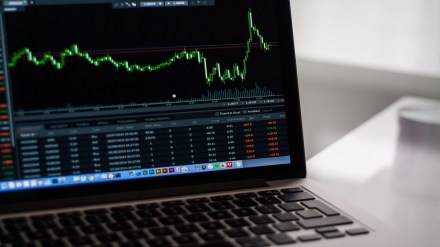In the era of globalisation, you have access to global markets and the opportunity to invest in international companies. You can invest in global companies either by directly investing in US stocks or through international mutual funds, which invest in foreign companies.
Depending on one’s risk appetite, investing directly in US stocks can offer a slightly different experience compared to investing in international mutual funds. For many, direct investment in US stocks may be riskier than international mutual funds, as it requires a strong understanding and research of the company, industry and the economic situation of the country.
Direct investment in US stocks vs international mutual funds/PMS
In this write-up, we will explore insights from Arindam Mandal, Head of Global Equities at Marcellus, to address the question: Is it better to invest directly in US stocks, or would it be more beneficial to invest in international mutual funds/PMS funds?
Mandal explains, “It’s an age-old debate, and whether it’s India or global equities, one truth remains clear at the core of this debate: different solutions cater to different investors. In my experience, I don’t necessarily think anyone can win this argument on either side.”
Also read: Mutual Fund Returns Soar: Should you stay invested or pay off your home loan?
Before delving into the specifics, he notes an important observation: “Many do-it-yourself (DIY) investors thrive in bull markets but struggle in bear markets. Their portfolios often reflect gains that seem to validate their long-term strategies. Yet, as market conditions shift, the reality can be starkly different. When market downturns occur, many individuals panic, leading to hasty decisions that can exacerbate losses.”
He further points out that “when an investor is doing it independently, it’s difficult to clearly differentiate between investments and trading. The absence of clear goals or a proper financial strategy can lead to bias creeping in.” Mandal references a study, stating that “approx. 90% of the stock market traders have incurred losses.”
This phenomenon, he explains, is not confined to Indian equities but extends to global markets as well. However, he emphasizes that successful DIY investors do exist. “With the wealth of data, online resources, and educational materials available today, those who approach investing with discipline and rationality can indeed thrive. The key lies in making informed decisions, maintaining a long-term perspective, and resisting the urge to react impulsively to market fluctuations.”
A breakdown of 3 key approaches
Having established this context, he breaks down the available investment options for Indian investors looking to tap into global equities. “For global equities, I understand there are a few investment options available from India. Let’s bucket them into three for ease of explanation and understanding benefits for each investment option,” he says.
DIY Investors: Mandal highlights that many platforms in India now allow investors to directly access US stocks. While this presents an exciting opportunity, he warns about a common trend: “Many DIY investors focus primarily on the ‘Magnificent Seven’ or FAANG stocks. This narrow view can lead to recency bias, where investors overlook the broader opportunities within the S&P 500, which includes 500 diverse companies across various sectors. It’s crucial for investors to recognise that the stock market offers a wealth of options beyond just the high-flying names, as some of these popular stocks may be overvalued.”
Also read: Baroda BNP Paribas AMC launches new equity fund to secure your child’s future; check details
Mutual Funds Investing in Offshore Funds (FOFs): He explains that Fund of Funds (FoFs) investing in global equities are gaining popularity in India. These funds pool money to invest in foreign mutual funds or ETFs, providing exposure to a range of global stocks. However, he points out a limitation: “These funds come under the USD 7 billion limit overseas investment limit, which has stopped many of these funds from taking additional investments.” He also advises investors to check the taxation and expense ratios of these funds, as they can sometimes be costly. “Many funds have a feeder and a parent fund expense which may turn out to be a significantly expensive affair,” he adds. He further notes that “this category has also gone through multiple tax changes in the recent past, so investors should do their due diligence before investing.”
Alternative Investment Options (AIF/PMS) via Gift City: The recent developments in Gujarat’s Gift City have provided new opportunities for Indian investors to access global markets through Portfolio Management Services (PMS) and Alternative Investment Funds (AIFs).
He acknowledges that the debate between DIY investing and professional management (mutual funds or alternatives) may never reach a definitive conclusion. “Each approach has its merits and drawbacks, and the best choice often depends on individual circumstances,” he says.
